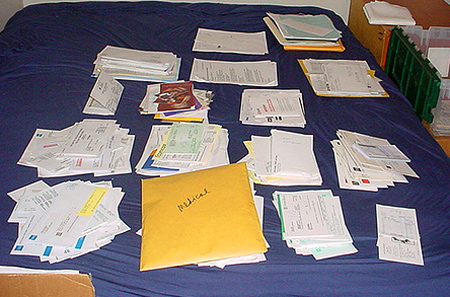Let’s say Derek is a student, and on his mid-term exam he did badly because he blew off studying. Let’s further say that Derek feels pretty crummy about this. Is feeling crummy going to help him or hurt him? Will it make him more or less likely to study next time? Will it improve him in other ways, or hurt him in other ways, or both? Does he have some kind of moral obligation to feel guilt?
Guilt is useful … sometimes. If I feel guilty, it means that I’ve looked back on something I did and compared it to how I’d like to act. This is a very smart thing to do, because if I’m not aware of whether or not I’m following my own best instincts, then I have no idea what I might want to improve or how I would need to improve it. Guilt is a red flag, a warning indicator on the dashboard saying that something has gone wrong. And guilt can persist for quite a while if the problem doesn’t get fixed.
That warning job, as far as I can tell from research, coaching, and personal experience, is the only useful thing there is about guilt. Once you get that message and commit to doing something about it, the guilt is no longer useful, providing you won’t forget about your commitment the minute the guilt is gone–so it makes sense to get rid of it. How? By detecting and repairing the broken ideas that are keeping the guilt going. (I won’t go into more detail about that for here, but just follow the links for more detailed information.)
In addition to that helpful warning role, guilt plays a harmful role in other ways. It can make it painful to think about certain obligations–for instance, if Derek feels guilty about not studying for his mid-term, he may avoid thinking about studying for his finals because he doesn’t want to revisit the unpleasant subject of him failing to study. Guilt sucks up attention and causes negative emotions like sadness and anxiety, which can make it harder to be motivated even in unrelated areas.
So the best possible use of guilt is to experience it, pay attention to it, figure out what needs to be done, and then get rid of it.
A study by Michael J.A. Wohl, Timothy A. Pychyla, and Shannon H. Bennetta (“I forgive myself, now I can study: How self-forgiveness for procrastinating can reduce future procrastination“), published this past February, supports this view of guilt as damaging in the long term. It surveyed students who felt guilty about past studying habits, whether they forgave themselves, and how that forgiveness (or lack of it) related to their studying afterward. Wohl and colleagues concluded that students who forgave themselves (a kind of organic idea repair–though that’s a subject for a future post) tended to do better studying afterward than students who kept beating themselves up. In other words, letting go of the guilt helped them act better so that they wouldn’t need to feel guilty in future.
Thanks to Jeremy Dean of Psyblog for the mention of the article.
Photo by akeg












